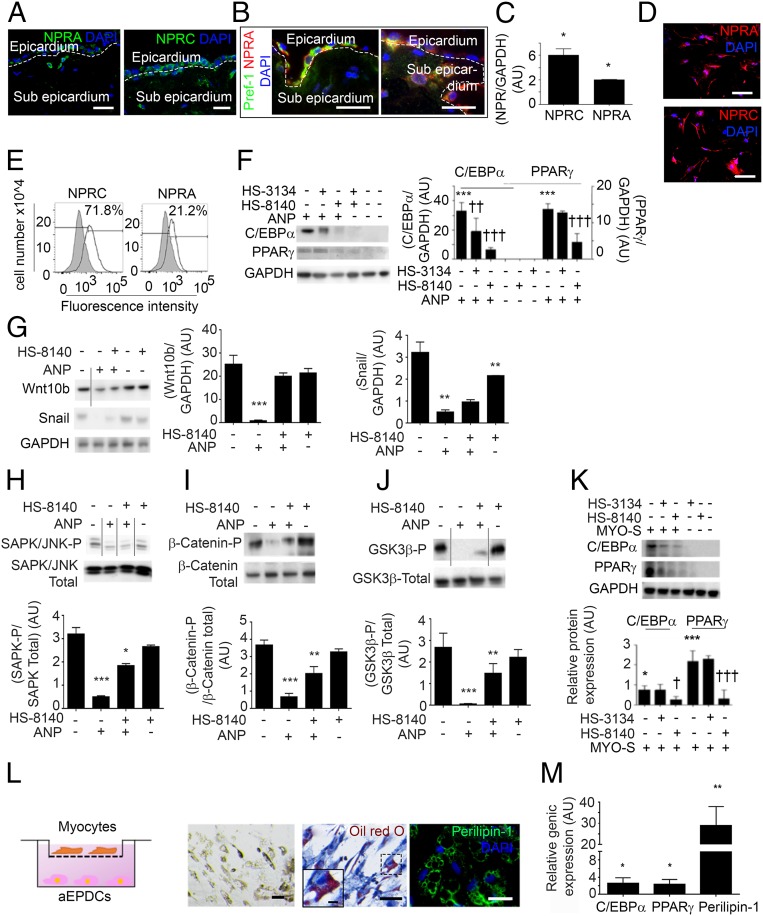Fig. 6.
The NPRA type receptor is involved in the adipogenic effect of ANP. (A and B) Immunofluorescence staining for NPRA, NPRC (A) and costaining for Pref-1 and NPRA (B) in 7-µm-thick sections of human atrial tissue (n = 6). (Scale bars, 10 µm.) (C) NPRA and NPRC expression in aEPDCs analyzed by Western blot (n = 3). Data are expressed as the mean ± SEM of three independent experiments. *P < 0.05, unpaired t test. (D) Adult EPDCs expression for NPRA and NPRC analyzed by immunofluorescence (n = 4) (Scale bars, 20 µm.) (E) Expression for NPRA and NPRC analyzed by flow cytometry in aEPDCs (n = 5). (F and K) aEPDCs pretreated with NPRA antagonist (HS-8140) or NPRC antagonist (HS-3134) and then treated with ANP (F) (n = 3) or MYO-S (K) (n = 3) for 21 d were assessed by immunoblots. Relative quantification for C/EBPα and PPARγ is compared with untreated cells (F and K) (mean ± SEM of independent experiments *P < 0.05; ***P < 0.001; ††P < 0.01, †††P < 0.001 compared with human EPDCs treated with ANP (F) or MYO-S (K); one-way ANOVA and Bonferroni’s post hoc test). (G–J) aEPDCs pretreated with NPRA antagonist (HS-8140) (n = 3) and treated with ANP (n = 3) for 21 d were assessed by immunoblots. Relative quantification of Wnt10b and Snail (G), SAPK/JNK (H), β-Catenin (I), and GSK3β (J) are compared with untreated cells (mean ± SEM of independent experiments; *P < 0.05; **P < 0.01; ***P < 0.001; one-way ANOVA and Bonferroni's post hoc test). Vertical lines indicates splicing between blots. (L, Left) Diagram representing the Transwell system. (Right) Oil Red O/hematoxylin staining and Perilipin-1 immunostaining of aEPDC cocultured with myocytes (n = 3). (Scale bars: 20 µm; Inset 5 µm.) (M) qPCR analysis of C/EBPα, PPARγ, and Perilipin-1 expression in aEPDCs (n = 4) cocultured with myocytes (n = 3) for 7 d. qPCR data are presented as the fold change relative to aEPDCs cultured without myocytes. Data are expressed as the mean ± SEM of independent experiments. *P < 0.05, **P < 0.01, compared with human EPDCs in normal culture; one-way ANOVA and Bonferroni’s post hoc test.

